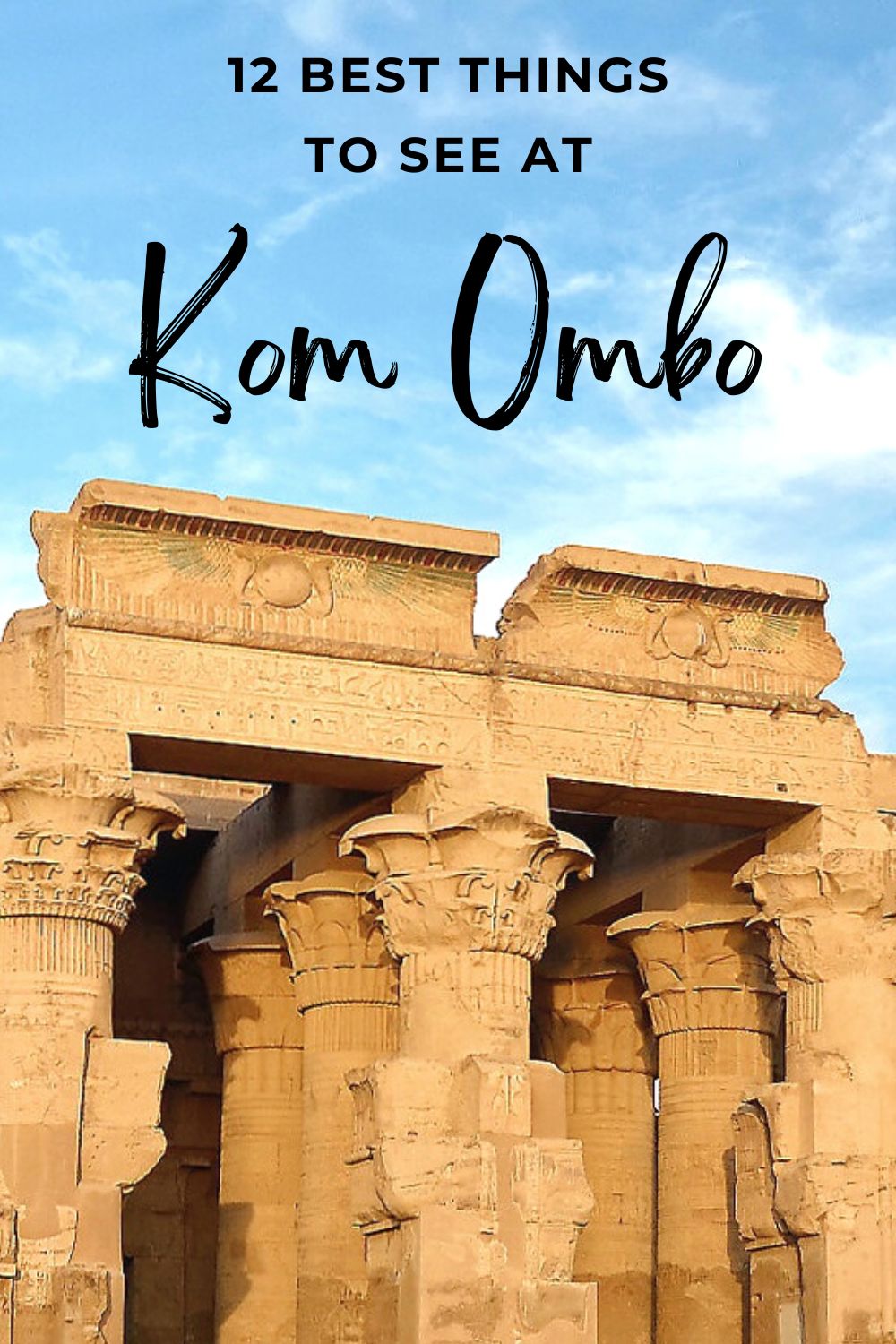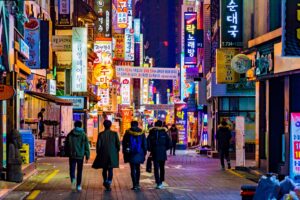12 Must-See Things At The Temple of Kom Ombo
10 min readKom Ombo is a magnificent temple along the Nile dedicated to the crocodile and falcon gods – and a must-see on your Egypt itinerary. Lined with intricate columns and sanctuaries to animal gods, Kom Ombo is a stunning Nile-side temple that’s a popular destination for Nile cruise boats. Kom Ombo is the only known temple dedicated to two different deities. Divided with perfect symmetry into two parts, the right side of the temple is dedicated to Sobek, the crocodile god of fertility and creator of the world. The left side is dedicated to Horus the Elder (aka Haroeris) the falcon god of the skies. As an expat living in Cairo, I’ve visited this temple numerous times and it’s one of my favorite stops on a Nile cruise. The Temple of Kom Ombo is a masterpiece of the Ptolemaic dynasty, the Macedonian Greeks who ruled Ancient Egypt for generations and brought stability. This dynasty famously ended with the Roman invasion and Cleopatra’s suicide. So in many ways Graeco-Roman temples like Kom Ombo were Ancient Egypt’s swan song, They were the last pagan temples built before the Roman invasion and the spread of Christianity. What is the story of the Kom Ombo Temple? Built from 108 to 47 BCE, the Temple of Kom Ombo was the ancients’ attempt to heal sicknesses, appease the ferocious Nile crocodile and sanctify the rule of the Ptolemaic kings. The temple once housed real-life crocodiles who were bred here, then later mummified and offered as sacrifices to Sobek. Today, many of those mummies can be found inside the adjacent Crocodile Museum. The Ancient Egyptians were naturally afraid of these enormous Nile beasts who devoured both animals and humans. But they believed if they worshiped Sobek, the crocodiles would not attack them. The Ptolemaic kings, on their part, wanted to associate themselves with the fertility and might of the crocodile god Sobek. They portrayed themselves at Kom Ombo alongside Ancient Egyptian gods to win the loyalty of common Egyptians. And since they ruled from faraway Alexandria, the Ptolemies eagerly built temples in the South to establish their sovereignty across all of Egypt. Is Kom Ombo worth visiting? You’ll likely visit a half dozen temples on your trip to Egypt – and this packed itinerary can quickly get overwhelming. With the numerous sites you’ll visit in Luxor and Aswan, you might wonder if this one is really worth a visit. Kom Ombo is absolutely worth it. The unique blend of Ptolemaic and Ancient Egyptian influences – and the beautiful Nile-side setting – make Kom Ombo an unforgettable temple. What is Kom Ombo famous for? This stretch of the Nile was once a hub for crocodile life and the center of worship for Sobek. But nothing remains of the ancient city today. And the crocodiles that once basked on the river banks all migrated south after the construction of the High Dam. Yet the temple stands tall, despite having been plundered by Copts for building materials, half-buried in sand and eroded by Nile flooding. Things to see at the Temple of Kom Ombo Where do you begin sightseeing this fascinating temple? And how can you avoid the temple fatigue that many travelers experience on this part of the Nile? Here are the must-see masterpieces at the Temple of Kom Ombo: 1. The Courtyard of Augustus This sweeping courtyard overlooking the Nile was a public space during Ancient Egyptian times – and a spot where animals were sacrificed to the temple deities. In the center there’s a small double altar where offerings were made to the two gods. There’s even a spot with a groove in stone left behind by the countless knives sharpened here for the ritual. The courtyard is surrounded by 16 gorgeous columns that date to the time of Tiberius Ceasar Augustus (42 BCE – 37 CE). None of the columns are intact but they’re all still standing. And you can still see Tiberius on the columns making offerings to the gods in well-preserved reliefs. 2. Purification relief Don’t miss the beautiful purification scene etched into the gateway at the entrance to the temple. The relief depicts Ptolemy XII – father of the famous Cleopatra – purified by the gods Thoth and Horus in the presence of Haroeris, whose image only remains from the waist down. On the right side of the temple, the same scene is repeated as Ptolemy is purified by the same two gods. But this time it’s in the presence of Sobek (since this is Sobek’s half of the temple). 3. Crowning relief On the back of the facade, another gorgeous relief shows Ptolemy XII being crowned by the goddesses Wadjet and Nekhbet in the presence of Sobek-Ra and Hathor. The gods form a protective zone around the king, blessing his rule and legitimizing his power. 4. Hypostyle halls The two hypostyle halls at Kom Ombo feature rows of exquisite columns carved with the lotus of Upper Egypt and the papyrus of the Delta. A hypostyle hall is an interior space with a roof supported by rows of pillars or columns. Most of the roof at Kom Ombo is now missing, but in ancient times these hypostyle halls were entirely roofed and dimly lit with rays of light coming in through gaps near the ceiling. Elaborate column capitals (the tips of the columns) feature intricate floral lines, leaf shapes and curves that are symbolic of Ptolemaic architecture – and similar to the columns found at Philae Temple. The columns have carved bands of hieroglyphs including ankhs (symbolizing life) and scenes that depict the pharaohs making offerings to the gods. Don’t miss the beautiful panel depicting Ptolemy XII accompanied by a series of protective gods. 5. Festive calendar A remarkable relief depicts the 360-day calendar used by the priests to mark annual harvest seasons and their corresponding temple rituals. The festive calendar at Kom Ombo divides the year into three different seasons all associated with the rise and fall of the Nile: a season of flooding (Akhet), growing (Peret) and harvest (Shemu). Each season has 4 months, and each month contains 3 weeks (at 10 days each). Nestled in the inner section of the outer enclosure wall, this relief is an intricate agenda of temple rituals performed by the temple’s dedicated priests. To please the gods, it was vital for these rituals to be performed on time. One panel lists the date, month and season, while another panel lists temple services and religious duties. 6. Sanctuaries The two twin sanctuaries at Kom Ombo are the most sacred part of the temple – and once housed the statues of the gods that the priests venerated three times a day. All that remains of the sanctuaries are two black granite pedestals that once held the divine barks of the gods with the sacred statue tucked inside. The granite pedestal on the right once held the sacred statue of Sobek, while the granite block on the left housed Horus the Elder (or Haroeris as the Ptolemies called him). Secret rooms under the sanctuaries once housed equipment used by temple priests for rituals. 7. Nilometer An ancient Nilometer on the left side of the temple was used to measure the height of the Nile waters – and predict flood or famine. The Nilometer has a descending staircase and an indicator that marks the ideal water level needed for a good harvest. It can be quite dizzying to gaze down into. Yet it was a crucial tool in Ancient Egypt used to asses the fluctuations of the Nile. When water was too low, there was a famine ahead. If the level was too high, it could mean destructive floods. This information was crucial to plan ahead and dig any necessary irrigation canals. The Nilometer was also used to calculate annual tax rates based on the outcome of the harvest. The deep circular well is 16 meters deep and dates back to the Roman Period (30 BCE – 395 CE). It’s connected to a smaller well that served the daily needs of the temple staff. The smaller well was likewise linked to a pool where temple priests performed their ablutions. 8. Crocodile well Don’t miss the small crocodile well near the Nilometer. It’s believed this was once an artificial pond that housed newborn crocodiles – which were later mummified and sacrificed to Sobek. 9. Surgical instruments The most famous relief inside the temple depicts a series of surgical instruments believed to be the earliest images of medical tools by the Ancient Egyptians. The relief shows a series of surgical instruments including hooks, knives, probes and forceps. Isis and Nephtys are shown on the left seated in birthing chairs during labor. These instruments might have been used during a temple ritual of repairing Horus’ eye, torn out by the god Set (his enemy). The restored eye is perhaps the most famous symbol in Ancient Egyptian mythology: the Eye of Horus, or Wedjat, symbolizing healing and the restoration of order. But the surgical instruments were more likely used to treat patients inside a series of clinics that functioned as an ancient hospital right inside the temple. Medicine was highly developed in Ancient Egypt and it was richly praised in Homer’s Odyssey. Kom Ombo was a popular destination for pilgrims who sought solace from Haroeris, a divine healer sometimes called the “head of physicians.” The pilgrims would entreat Haroeris to cure their illnesses – relying on both medical remedies and the temple’s spiritual power. Treatments inside Kom Ombo included onion juice to ease eye irritations. And according to one hieroglyph that depicts a pair of dripping penises, STDs were also treated here. 10. Hearing Ear Chapel This beautiful relief is carved on Kom Ombo’s outer wall for common people who weren’t allowed to enter the temple. A deep recess in the stone has eyes and ears to hear the various complaints of ailing pilgrims, who came here to voice their woes right into the hole. Carved into the temple’s central back wall, this recess is the nearest possible point to the sanctuary while still remaining outside the temple. Sobek and Haroeris are shown facing each other on their respective halves of the temple, with hymns underneath in their praise. Above the niche is Heh-Shu, kneeling with outstretched wings. This god is a combined form of Heh, god of eternity, and Shu, god of peace, air and wind. He is surrounded by four fantastical creatures that represent the four winds. 11. Lion relief This intriguing relief on the outer wall depicts a brutal scene of a lion devouring the hand of an unfortunate prisoner. At his feet are rows of enemies with their faces chiseled out. Though there’s no proof enemies were punished like this in Ptolemaic times, the scene is meant to portray Egypt’s power. 12. Kom Ombo Crocodile Museum Don’t miss the Crocodile Museum next door with its fascinating collection of crocodile mummies, statues and curiosities. Dimly-lit and nicely air-conditioned, the museum is a welcome respite after a hot afternoon of exploring the temple. It’s estimated that some 300 crocodile mummies were discovered in this area. And many are on display at the museum basking in the sand like they did in ancient times. Other exhibits include offerings to Sobek left by faithful pilgrims and explanations of the complicated process of animal mummification. Entrance to this museum is included in your ticket to the temple. How to get to Kom Ombo: Kom Ombo is in Southern Egypt, about 50 kilometres north of Aswan. If you’re going on a Nile cruise, your boat will definitely stop at the town of Kom Ombo – a small agricultural hub surrounded by sugar cane fields. The town is home to thousands of displaced Nubians who came here after the construction of the High Dam. Your boat will dock just at the foot of the temple. And it’s a short walk from there to the ticket booth (past plenty of souvenir vendors of course). And this is the...
The post 12 Must-See Things At The Temple of Kom Ombo appeared first on Vanilla Papers.
Kom Ombo is a magnificent temple along the Nile dedicated to the crocodile and falcon gods – and a must-see on your Egypt itinerary.
Lined with intricate columns and sanctuaries to animal gods, Kom Ombo is a stunning Nile-side temple that’s a popular destination for Nile cruise boats.
Kom Ombo is the only known temple dedicated to two different deities.
Divided with perfect symmetry into two parts, the right side of the temple is dedicated to Sobek, the crocodile god of fertility and creator of the world. The left side is dedicated to Horus the Elder (aka Haroeris) the falcon god of the skies.
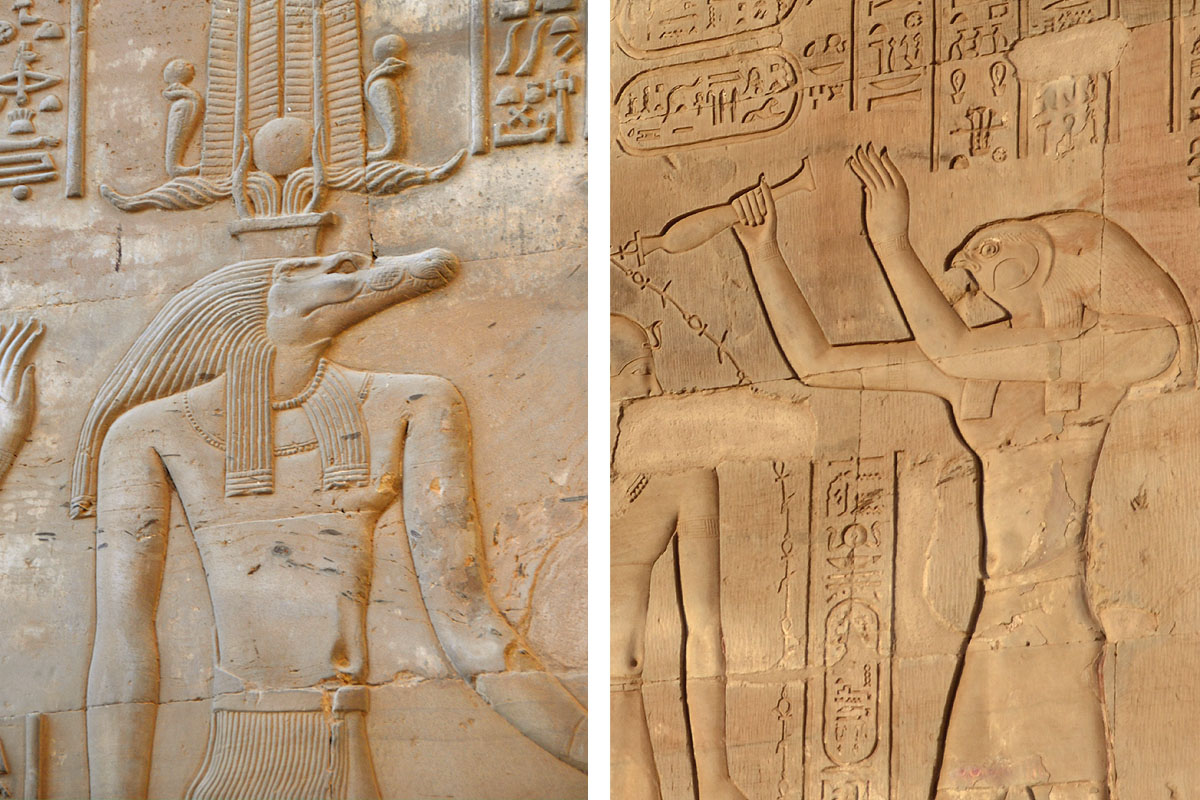

As an expat living in Cairo, I’ve visited this temple numerous times and it’s one of my favorite stops on a Nile cruise.
The Temple of Kom Ombo is a masterpiece of the Ptolemaic dynasty, the Macedonian Greeks who ruled Ancient Egypt for generations and brought stability.
This dynasty famously ended with the Roman invasion and Cleopatra’s suicide.
So in many ways Graeco-Roman temples like Kom Ombo were Ancient Egypt’s swan song, They were the last pagan temples built before the Roman invasion and the spread of Christianity.
What is the story of the Kom Ombo Temple?
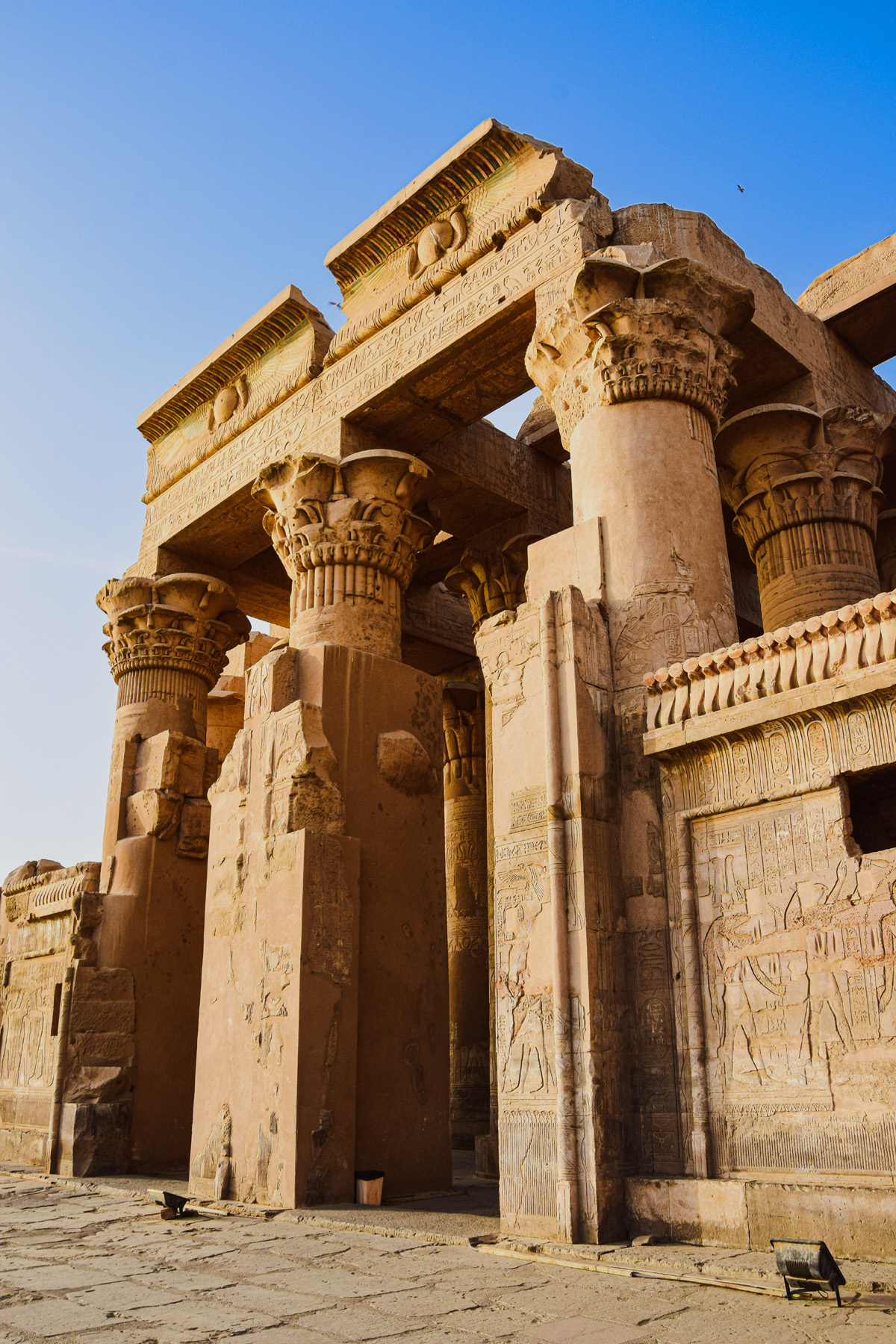

Built from 108 to 47 BCE, the Temple of Kom Ombo was the ancients’ attempt to heal sicknesses, appease the ferocious Nile crocodile and sanctify the rule of the Ptolemaic kings.
The temple once housed real-life crocodiles who were bred here, then later mummified and offered as sacrifices to Sobek. Today, many of those mummies can be found inside the adjacent Crocodile Museum.
The Ancient Egyptians were naturally afraid of these enormous Nile beasts who devoured both animals and humans. But they believed if they worshiped Sobek, the crocodiles would not attack them.
The Ptolemaic kings, on their part, wanted to associate themselves with the fertility and might of the crocodile god Sobek. They portrayed themselves at Kom Ombo alongside Ancient Egyptian gods to win the loyalty of common Egyptians.
And since they ruled from faraway Alexandria, the Ptolemies eagerly built temples in the South to establish their sovereignty across all of Egypt.
Is Kom Ombo worth visiting?
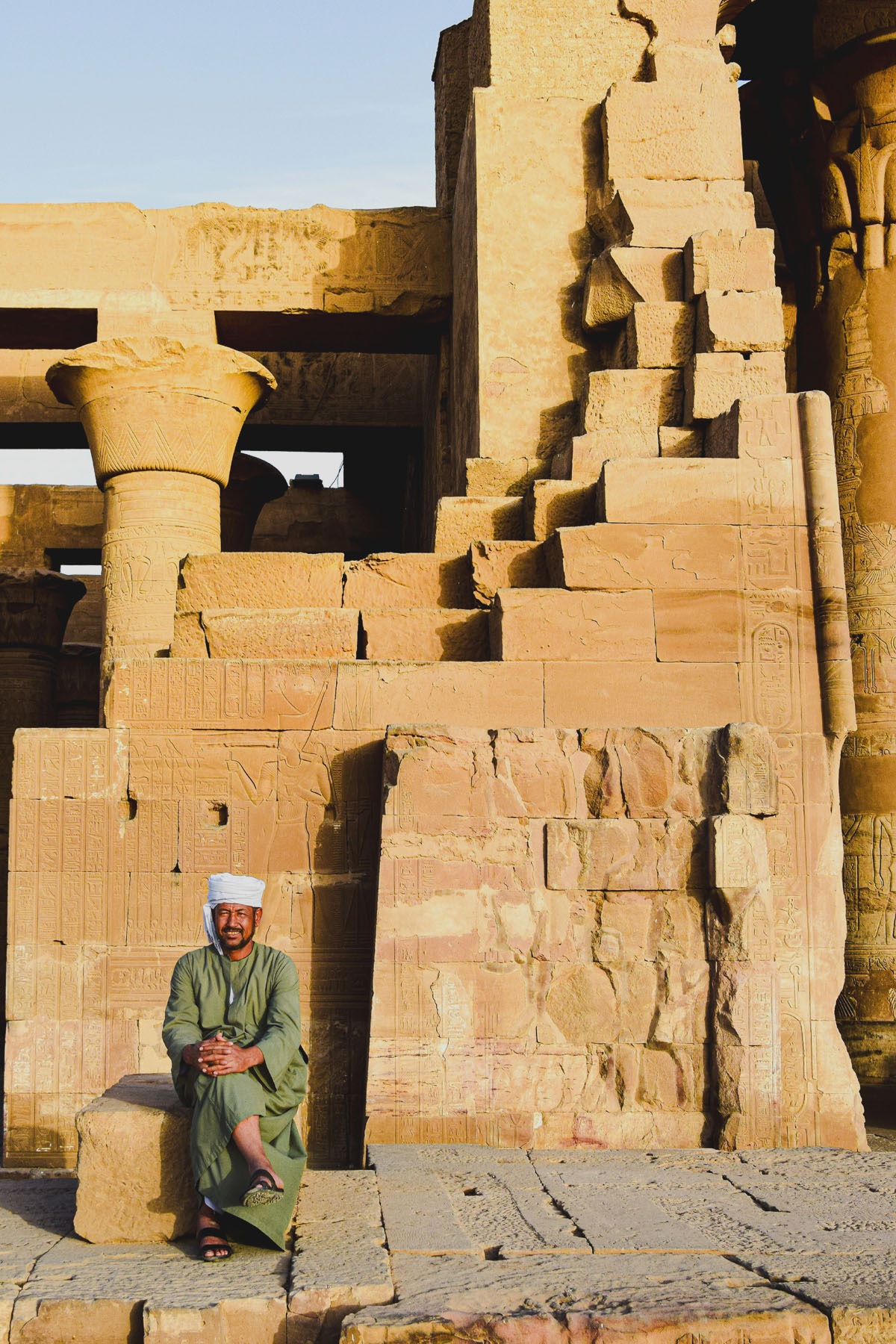

You’ll likely visit a half dozen temples on your trip to Egypt – and this packed itinerary can quickly get overwhelming.
With the numerous sites you’ll visit in Luxor and Aswan, you might wonder if this one is really worth a visit.
Kom Ombo is absolutely worth it. The unique blend of Ptolemaic and Ancient Egyptian influences – and the beautiful Nile-side setting – make Kom Ombo an unforgettable temple.
What is Kom Ombo famous for?
This stretch of the Nile was once a hub for crocodile life and the center of worship for Sobek.
But nothing remains of the ancient city today. And the crocodiles that once basked on the river banks all migrated south after the construction of the High Dam.
Yet the temple stands tall, despite having been plundered by Copts for building materials, half-buried in sand and eroded by Nile flooding.
Things to see at the Temple of Kom Ombo
Where do you begin sightseeing this fascinating temple? And how can you avoid the temple fatigue that many travelers experience on this part of the Nile?
Here are the must-see masterpieces at the Temple of Kom Ombo:
1. The Courtyard of Augustus
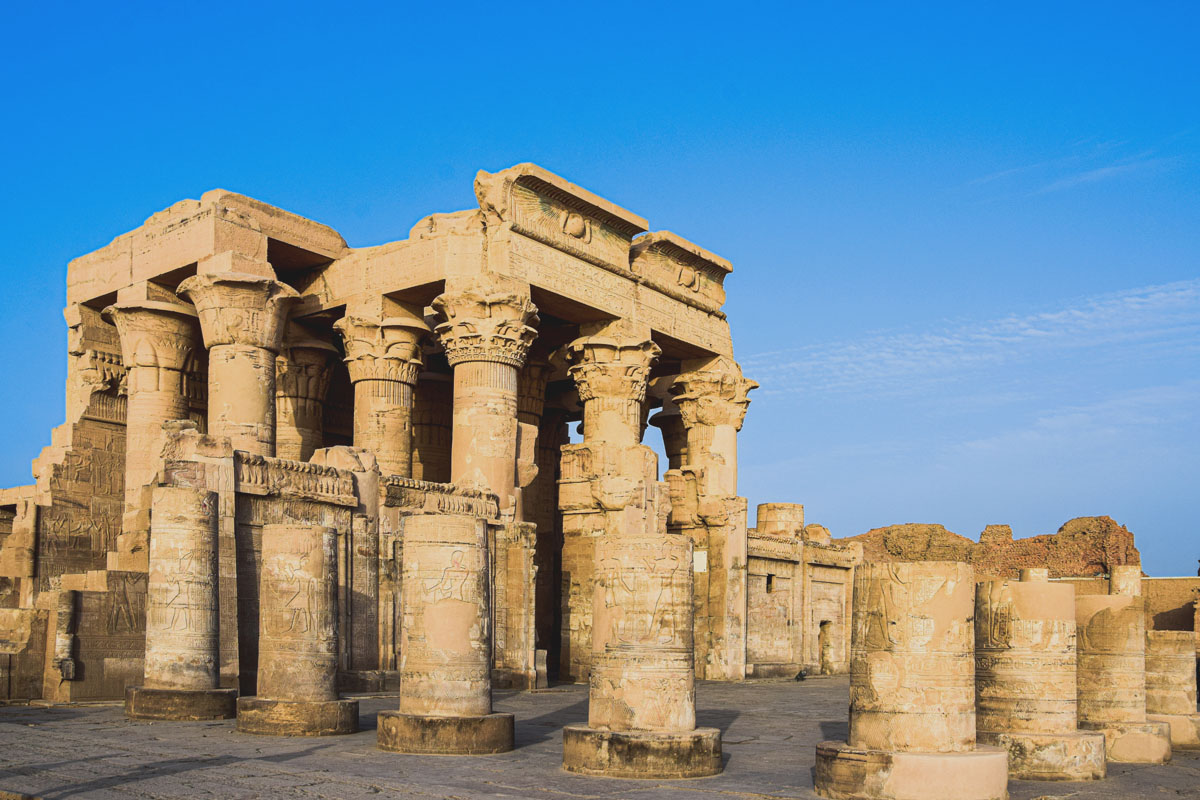

This sweeping courtyard overlooking the Nile was a public space during Ancient Egyptian times – and a spot where animals were sacrificed to the temple deities.
In the center there’s a small double altar where offerings were made to the two gods. There’s even a spot with a groove in stone left behind by the countless knives sharpened here for the ritual.
The courtyard is surrounded by 16 gorgeous columns that date to the time of Tiberius Ceasar Augustus (42 BCE – 37 CE).
None of the columns are intact but they’re all still standing. And you can still see Tiberius on the columns making offerings to the gods in well-preserved reliefs.
2. Purification relief
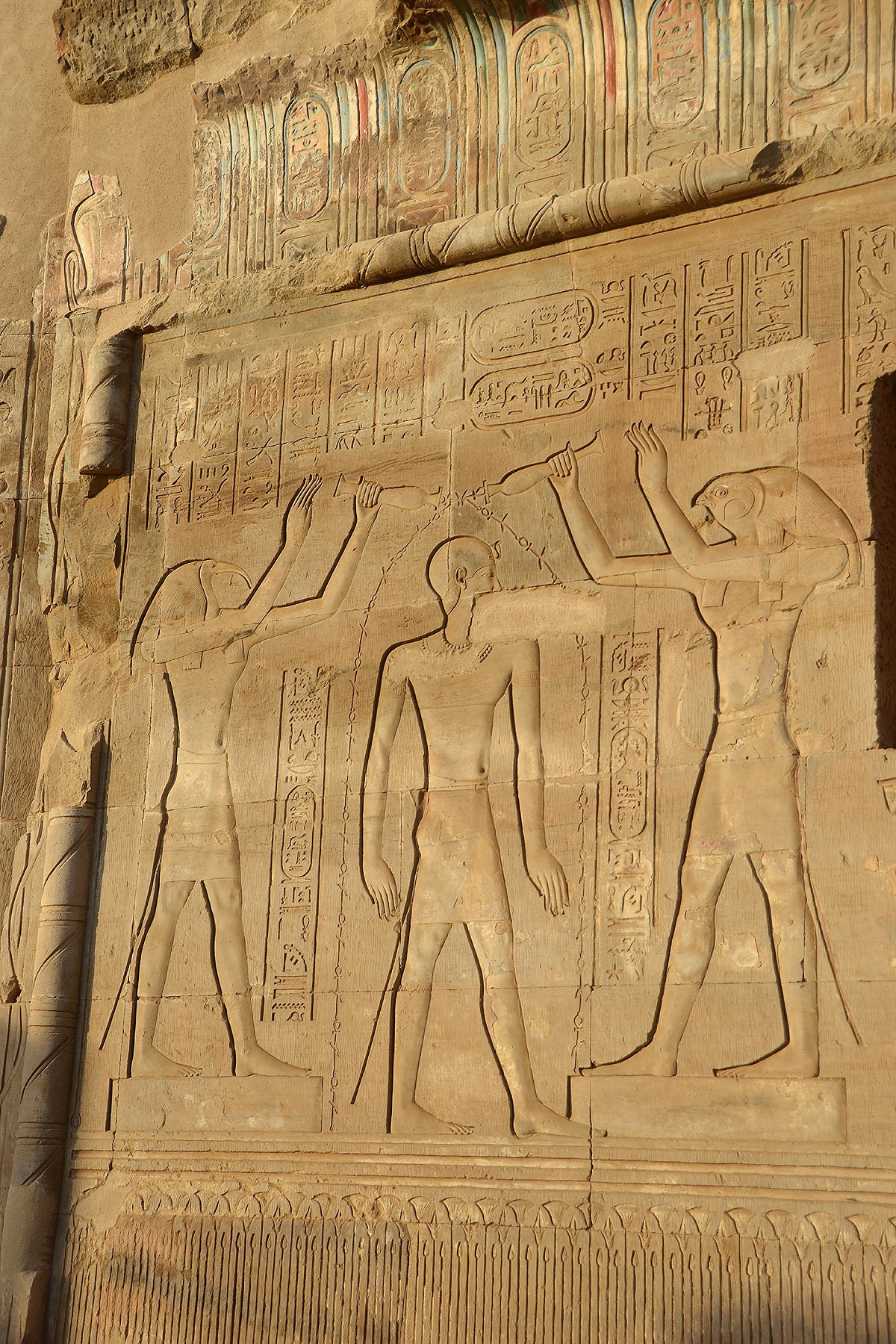

Don’t miss the beautiful purification scene etched into the gateway at the entrance to the temple.
The relief depicts Ptolemy XII – father of the famous Cleopatra – purified by the gods Thoth and Horus in the presence of Haroeris, whose image only remains from the waist down.
On the right side of the temple, the same scene is repeated as Ptolemy is purified by the same two gods. But this time it’s in the presence of Sobek (since this is Sobek’s half of the temple).
3. Crowning relief
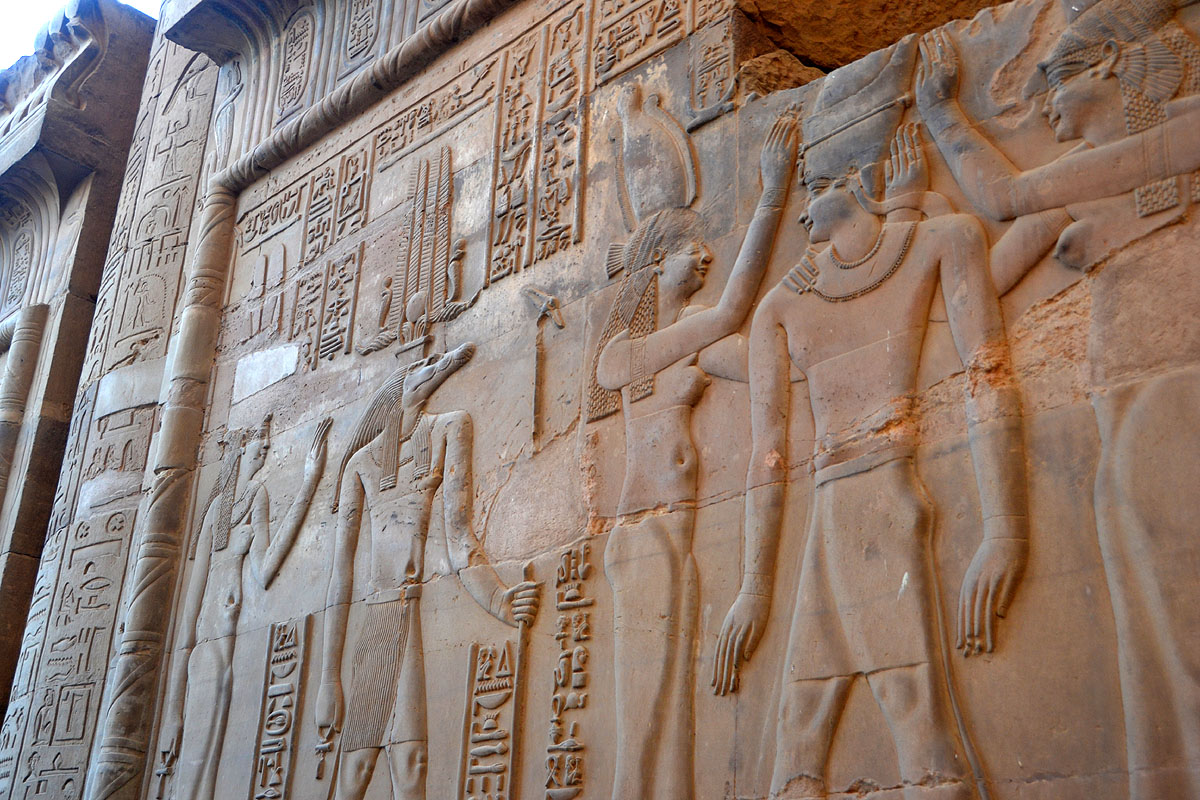

On the back of the facade, another gorgeous relief shows Ptolemy XII being crowned by the goddesses Wadjet and Nekhbet in the presence of Sobek-Ra and Hathor.
The gods form a protective zone around the king, blessing his rule and legitimizing his power.
4. Hypostyle halls
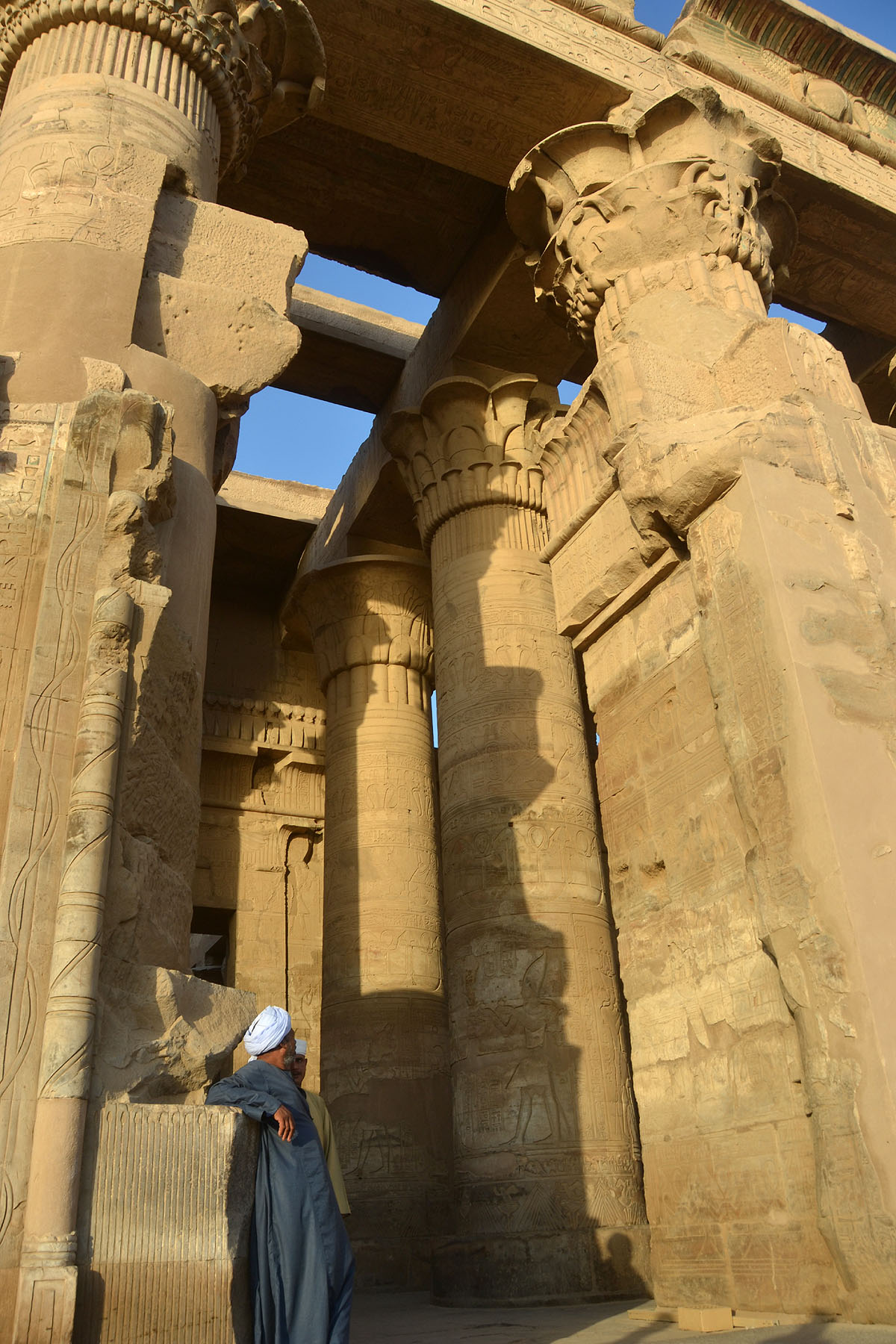

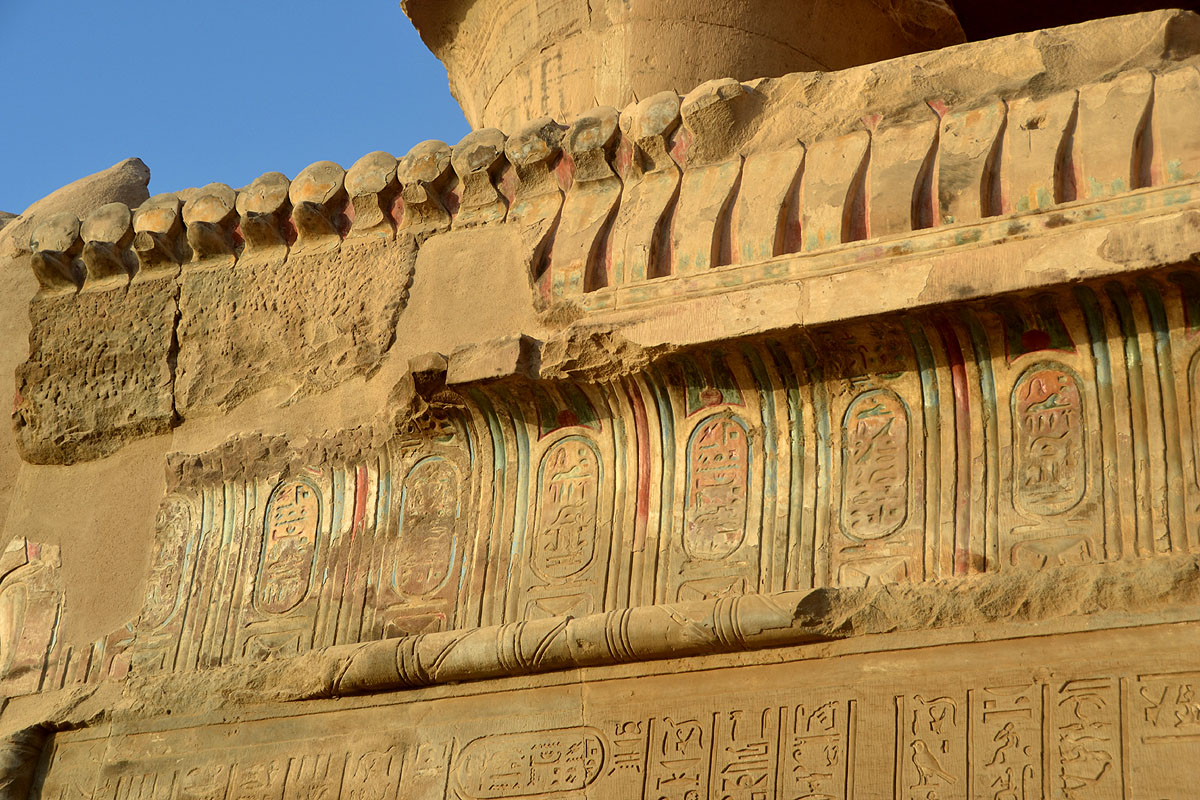

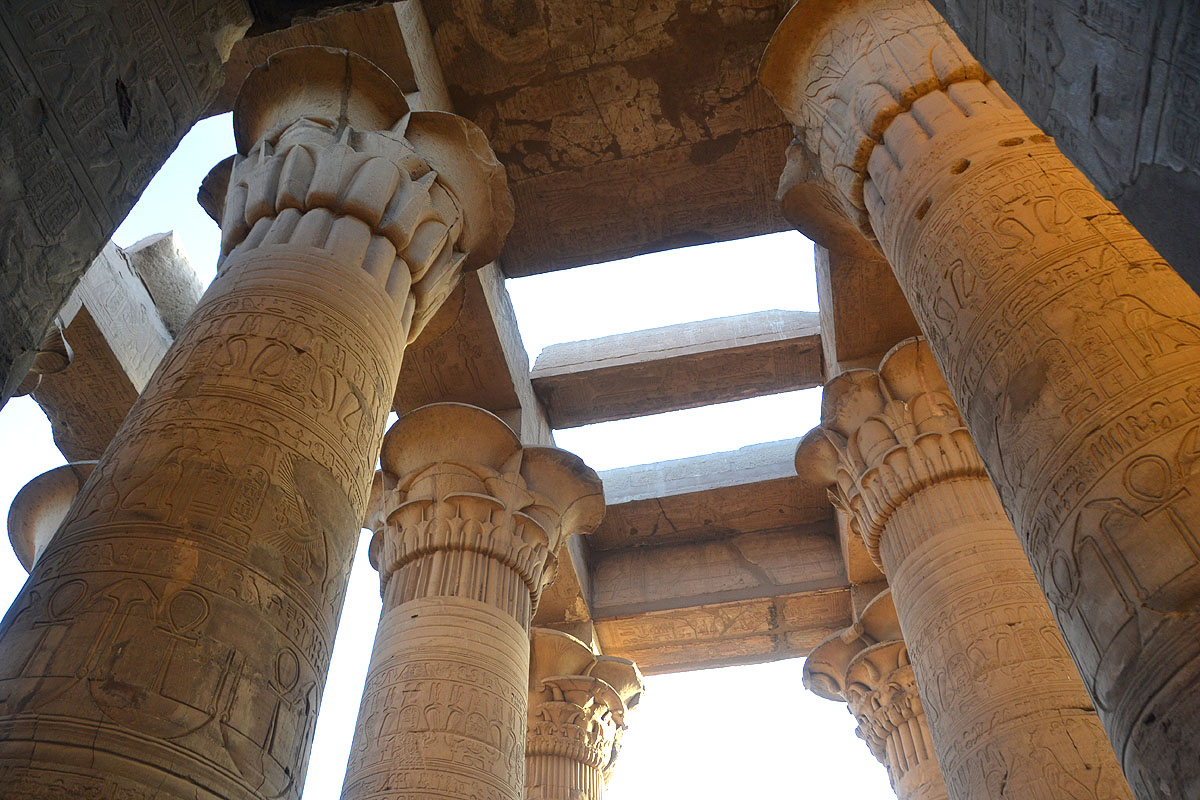

The two hypostyle halls at Kom Ombo feature rows of exquisite columns carved with the lotus of Upper Egypt and the papyrus of the Delta.
A hypostyle hall is an interior space with a roof supported by rows of pillars or columns. Most of the roof at Kom Ombo is now missing, but in ancient times these hypostyle halls were entirely roofed and dimly lit with rays of light coming in through gaps near the ceiling.
Elaborate column capitals (the tips of the columns) feature intricate floral lines, leaf shapes and curves that are symbolic of Ptolemaic architecture – and similar to the columns found at Philae Temple.
The columns have carved bands of hieroglyphs including ankhs (symbolizing life) and scenes that depict the pharaohs making offerings to the gods.
Don’t miss the beautiful panel depicting Ptolemy XII accompanied by a series of protective gods.
5. Festive calendar
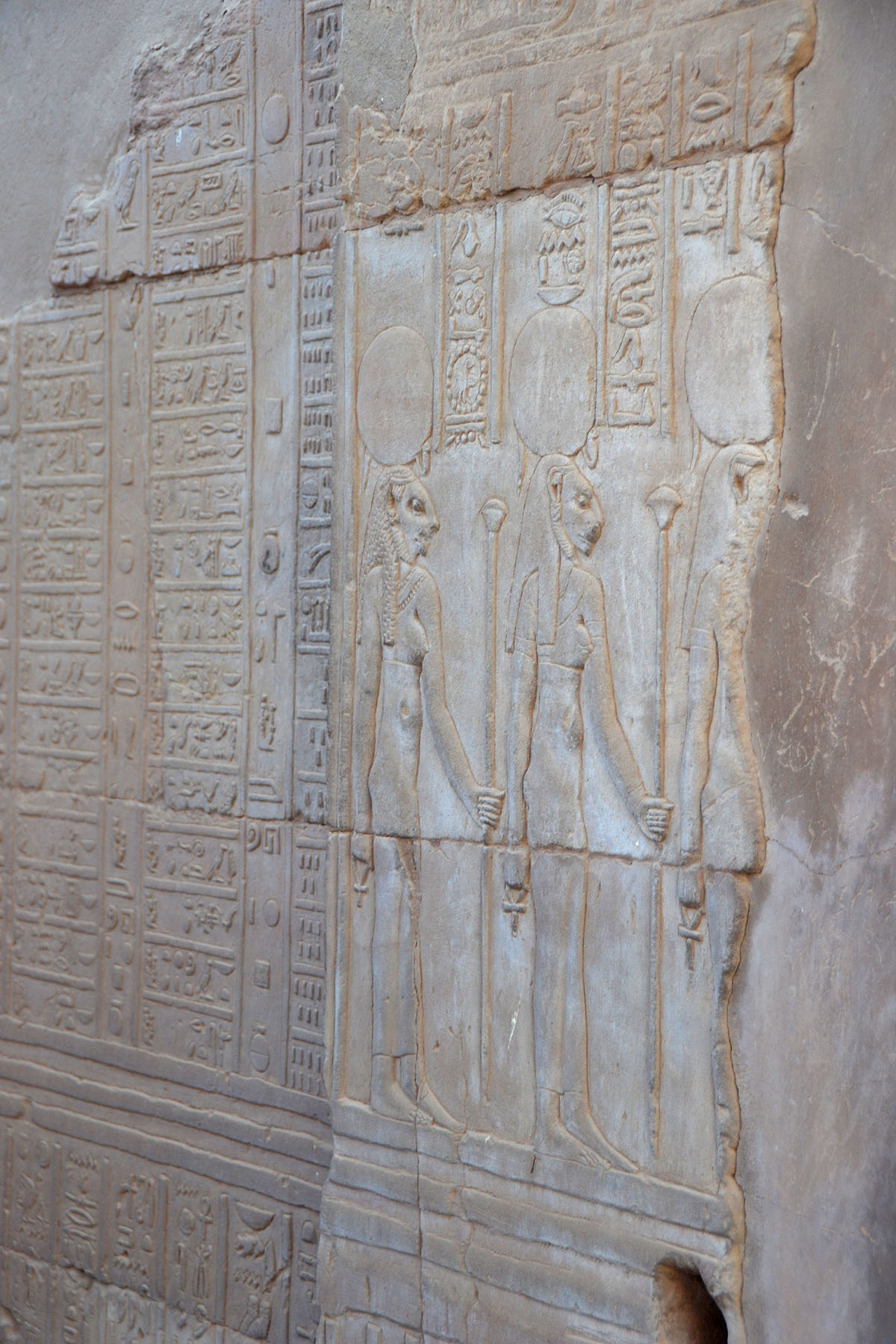

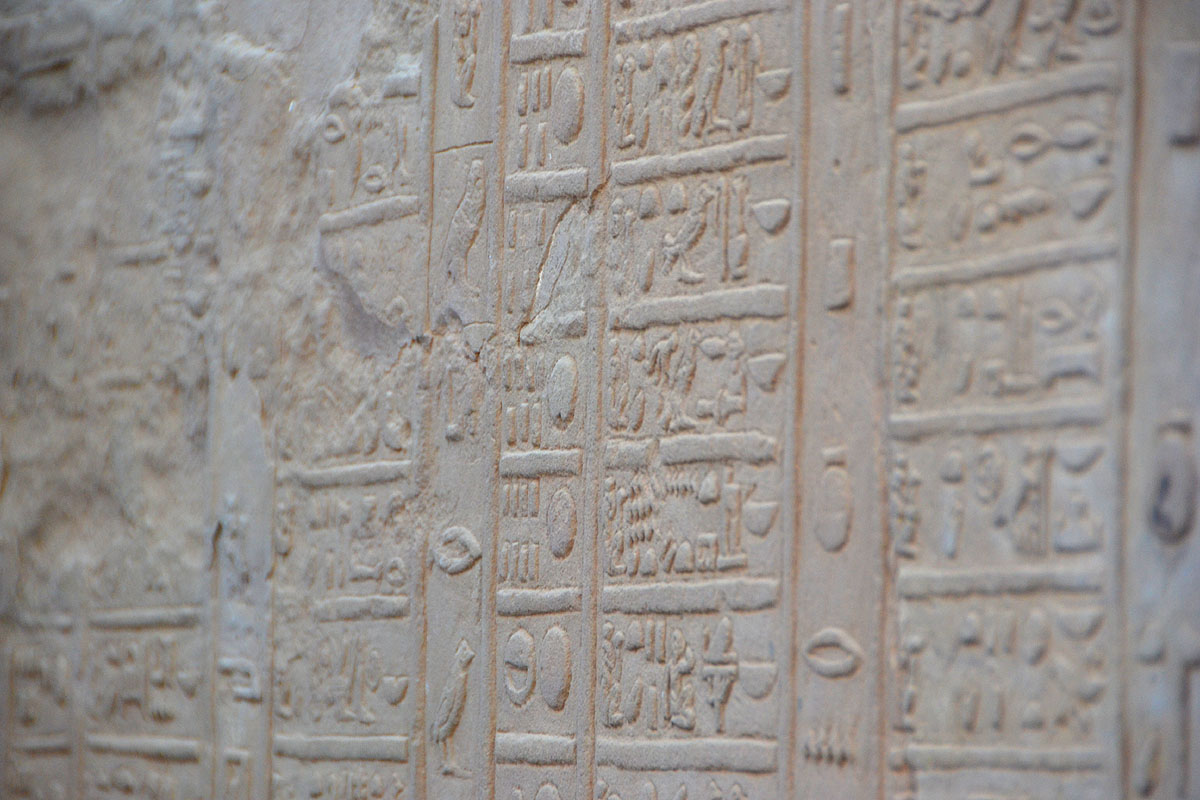

A remarkable relief depicts the 360-day calendar used by the priests to mark annual harvest seasons and their corresponding temple rituals.
The festive calendar at Kom Ombo divides the year into three different seasons all associated with the rise and fall of the Nile: a season of flooding (Akhet), growing (Peret) and harvest (Shemu). Each season has 4 months, and each month contains 3 weeks (at 10 days each).
Nestled in the inner section of the outer enclosure wall, this relief is an intricate agenda of temple rituals performed by the temple’s dedicated priests. To please the gods, it was vital for these rituals to be performed on time.
One panel lists the date, month and season, while another panel lists temple services and religious duties.
6. Sanctuaries
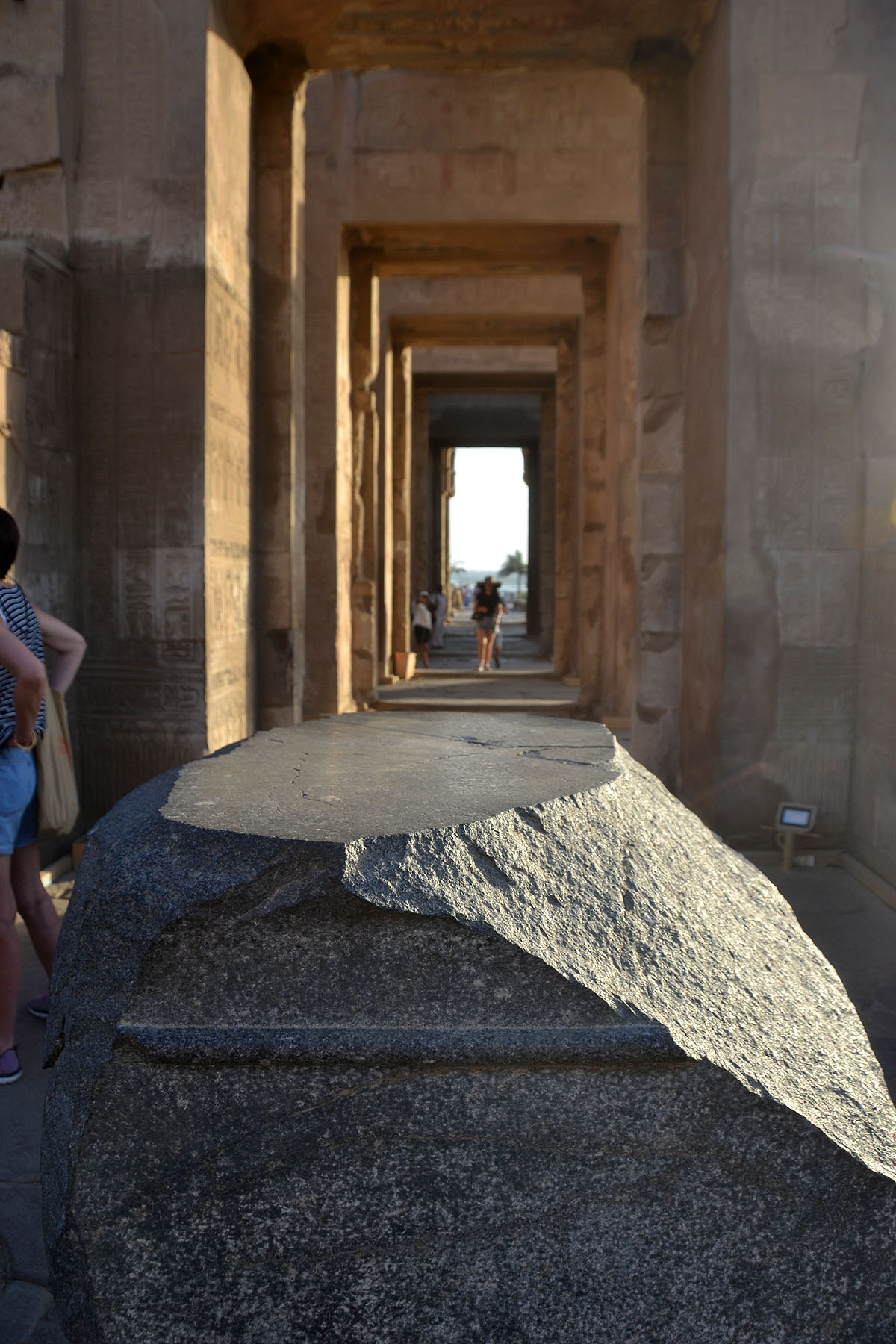

The two twin sanctuaries at Kom Ombo are the most sacred part of the temple – and once housed the statues of the gods that the priests venerated three times a day.
All that remains of the sanctuaries are two black granite pedestals that once held the divine barks of the gods with the sacred statue tucked inside.
The granite pedestal on the right once held the sacred statue of Sobek, while the granite block on the left housed Horus the Elder (or Haroeris as the Ptolemies called him).
Secret rooms under the sanctuaries once housed equipment used by temple priests for rituals.
7. Nilometer
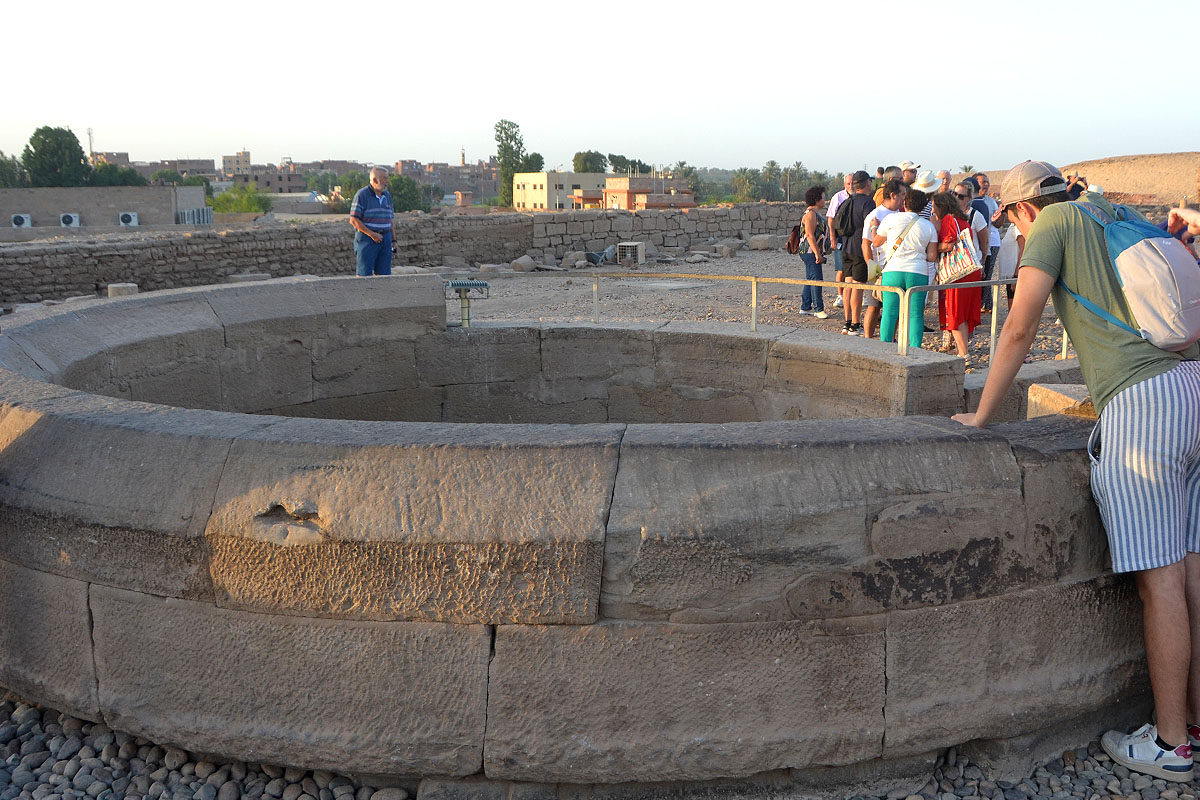

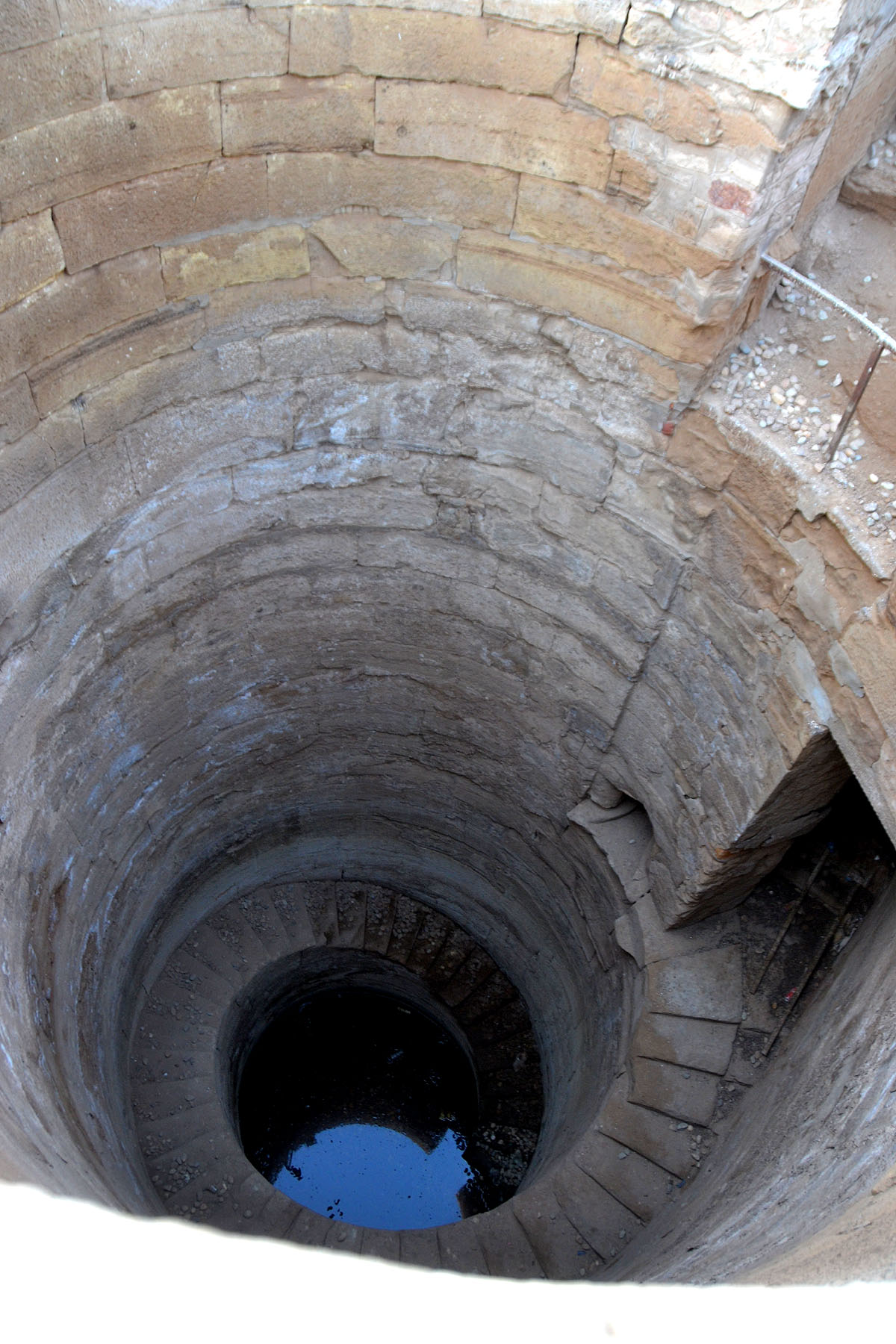

An ancient Nilometer on the left side of the temple was used to measure the height of the Nile waters – and predict flood or famine.
The Nilometer has a descending staircase and an indicator that marks the ideal water level needed for a good harvest.
It can be quite dizzying to gaze down into.
Yet it was a crucial tool in Ancient Egypt used to asses the fluctuations of the Nile. When water was too low, there was a famine ahead. If the level was too high, it could mean destructive floods. This information was crucial to plan ahead and dig any necessary irrigation canals.
The Nilometer was also used to calculate annual tax rates based on the outcome of the harvest.
The deep circular well is 16 meters deep and dates back to the Roman Period (30 BCE – 395 CE). It’s connected to a smaller well that served the daily needs of the temple staff. The smaller well was likewise linked to a pool where temple priests performed their ablutions.
8. Crocodile well
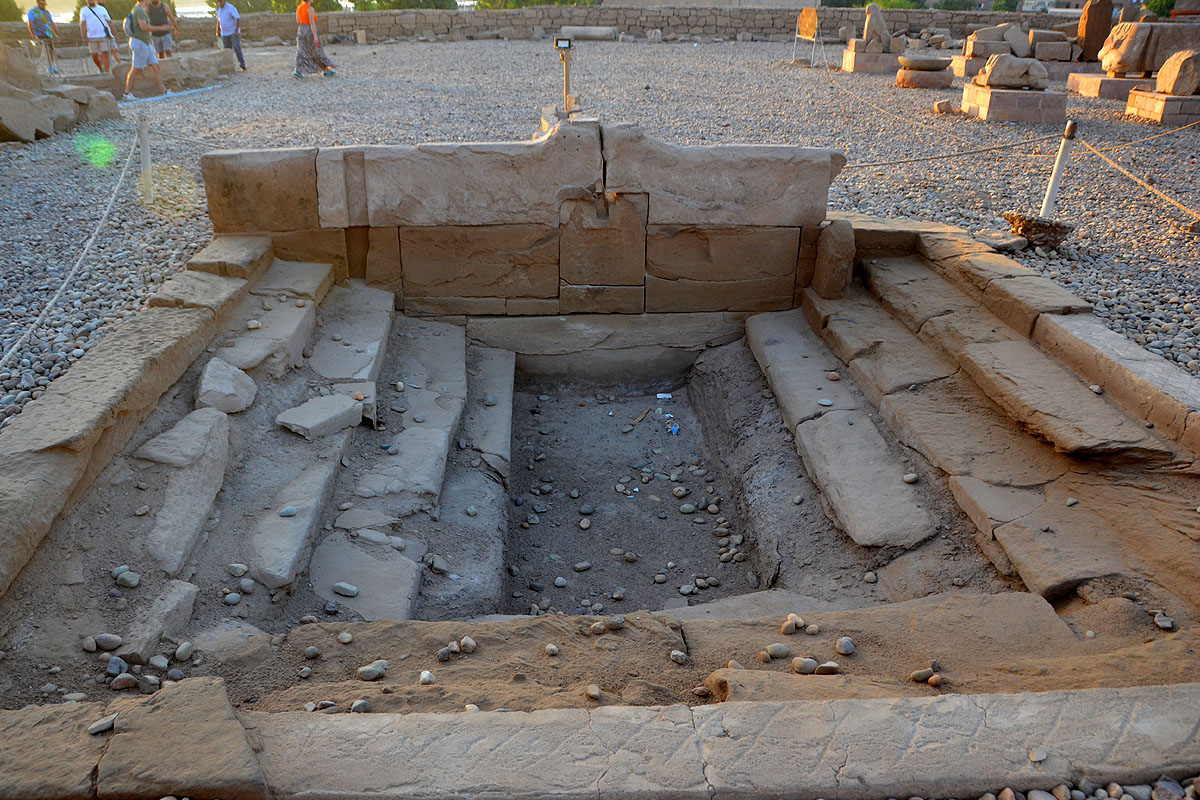

Don’t miss the small crocodile well near the Nilometer.
It’s believed this was once an artificial pond that housed newborn crocodiles – which were later mummified and sacrificed to Sobek.
9. Surgical instruments
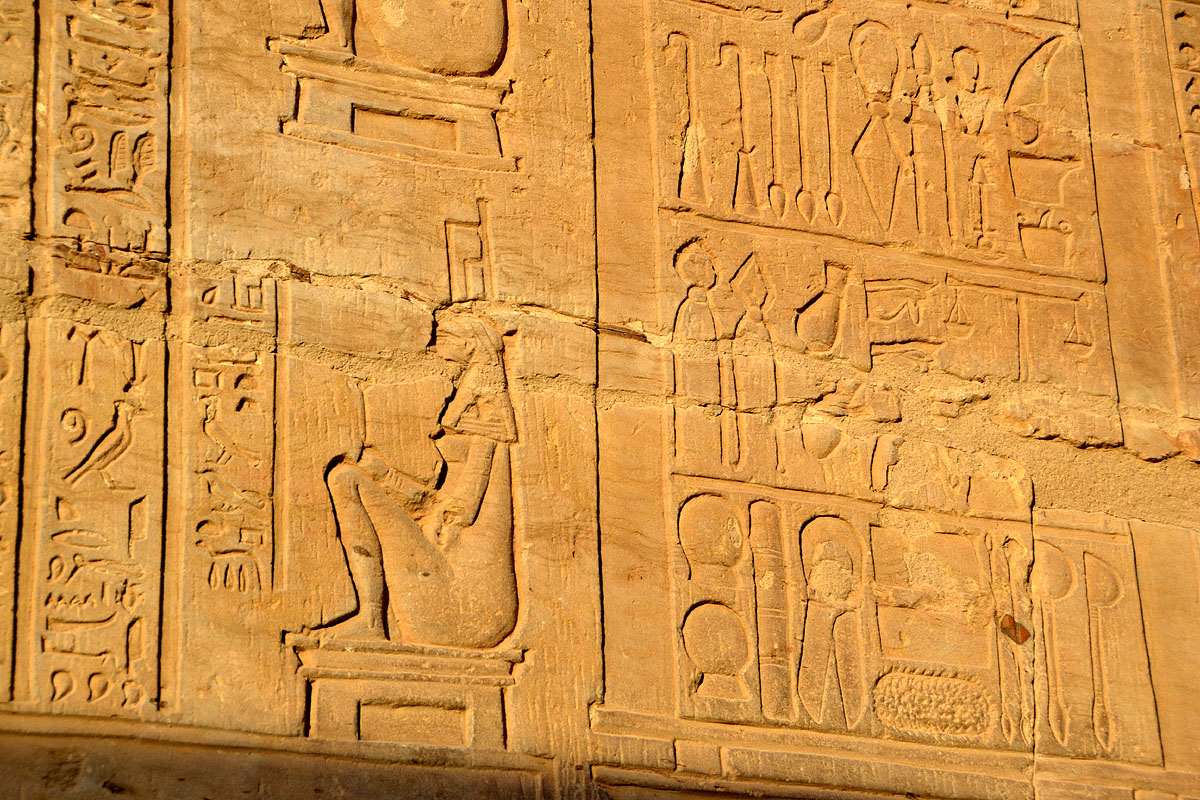

The most famous relief inside the temple depicts a series of surgical instruments believed to be the earliest images of medical tools by the Ancient Egyptians.
The relief shows a series of surgical instruments including hooks, knives, probes and forceps. Isis and Nephtys are shown on the left seated in birthing chairs during labor.
These instruments might have been used during a temple ritual of repairing Horus’ eye, torn out by the god Set (his enemy). The restored eye is perhaps the most famous symbol in Ancient Egyptian mythology: the Eye of Horus, or Wedjat, symbolizing healing and the restoration of order.
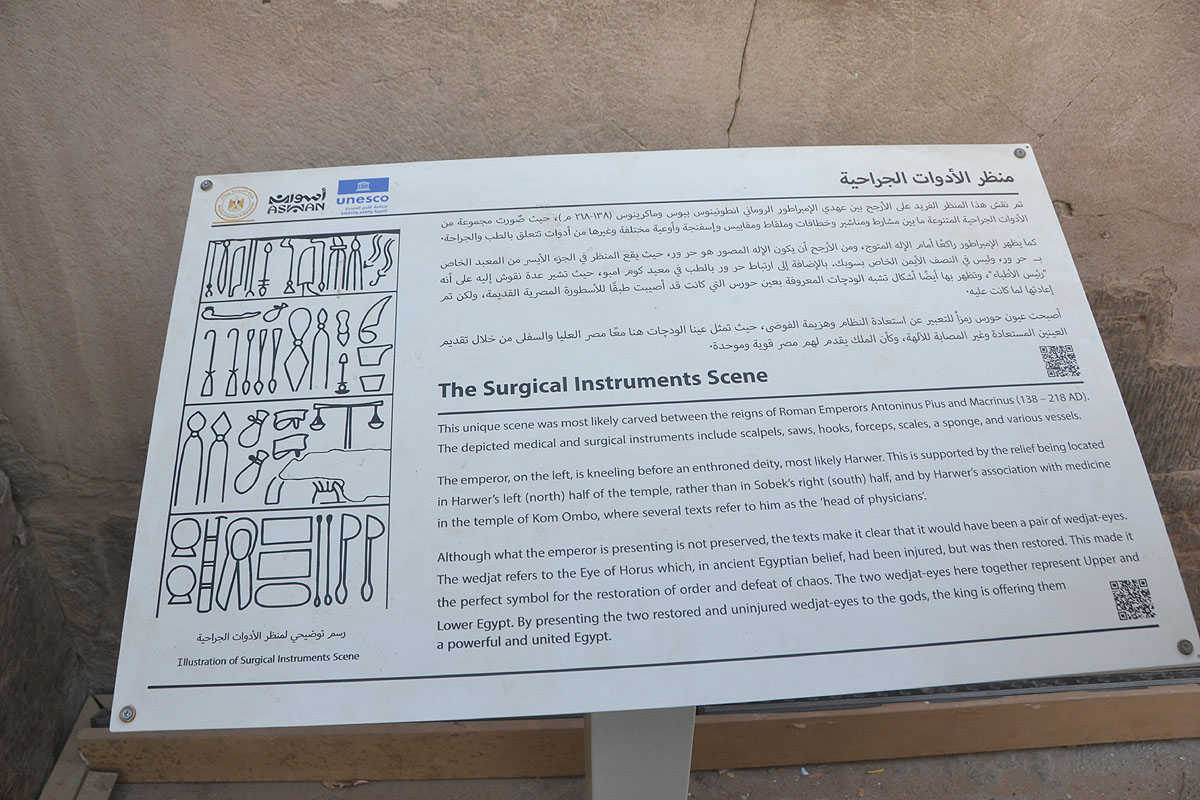

But the surgical instruments were more likely used to treat patients inside a series of clinics that functioned as an ancient hospital right inside the temple.
Medicine was highly developed in Ancient Egypt and it was richly praised in Homer’s Odyssey.
Kom Ombo was a popular destination for pilgrims who sought solace from Haroeris, a divine healer sometimes called the “head of physicians.” The pilgrims would entreat Haroeris to cure their illnesses – relying on both medical remedies and the temple’s spiritual power.
Treatments inside Kom Ombo included onion juice to ease eye irritations. And according to one hieroglyph that depicts a pair of dripping penises, STDs were also treated here.
10. Hearing Ear Chapel


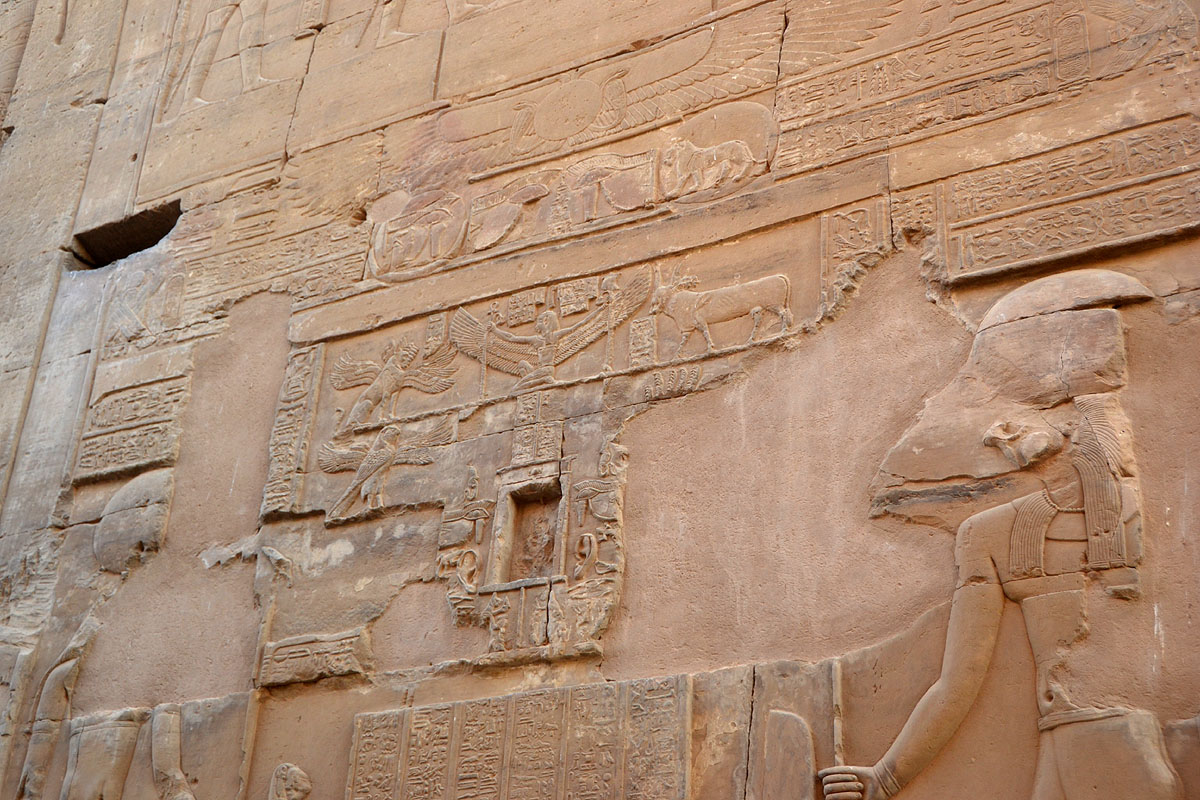

This beautiful relief is carved on Kom Ombo’s outer wall for common people who weren’t allowed to enter the temple.
A deep recess in the stone has eyes and ears to hear the various complaints of ailing pilgrims, who came here to voice their woes right into the hole.
Carved into the temple’s central back wall, this recess is the nearest possible point to the sanctuary while still remaining outside the temple.
Sobek and Haroeris are shown facing each other on their respective halves of the temple, with hymns underneath in their praise.
Above the niche is Heh-Shu, kneeling with outstretched wings. This god is a combined form of Heh, god of eternity, and Shu, god of peace, air and wind. He is surrounded by four fantastical creatures that represent the four winds.
11. Lion relief
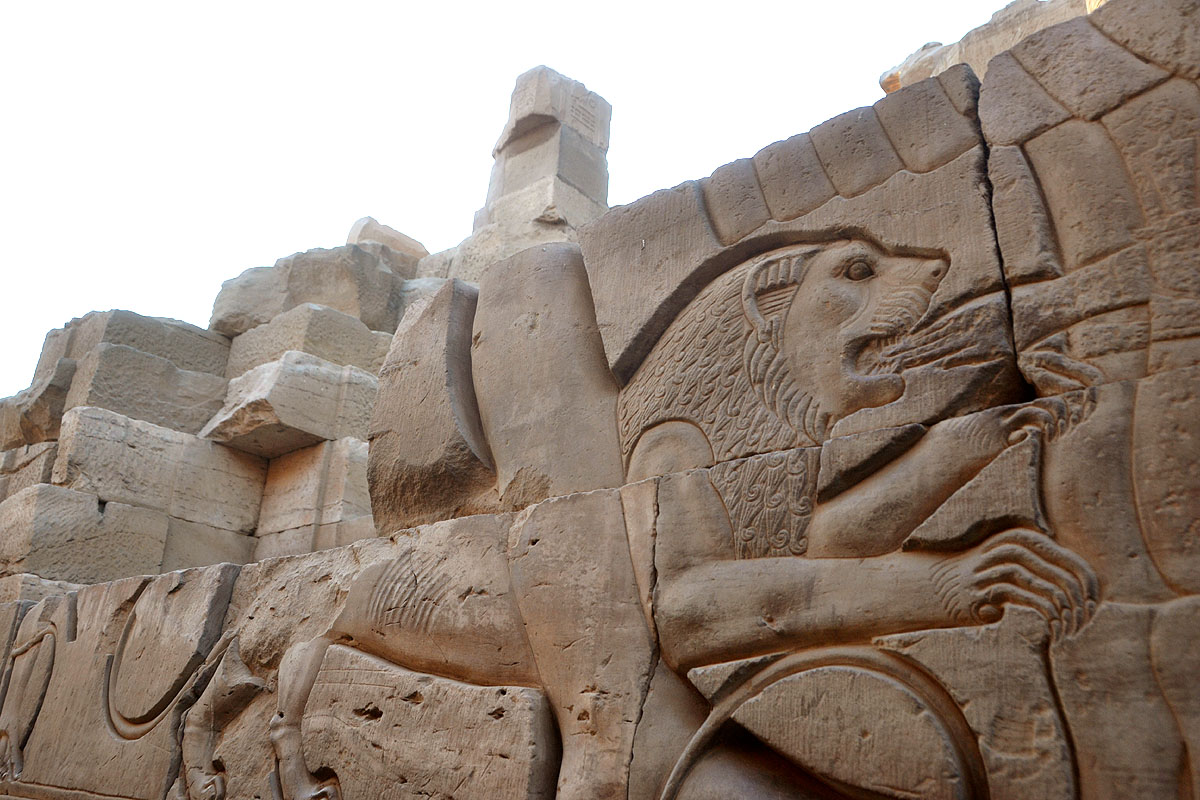

This intriguing relief on the outer wall depicts a brutal scene of a lion devouring the hand of an unfortunate prisoner.
At his feet are rows of enemies with their faces chiseled out.
Though there’s no proof enemies were punished like this in Ptolemaic times, the scene is meant to portray Egypt’s power.
12. Kom Ombo Crocodile Museum
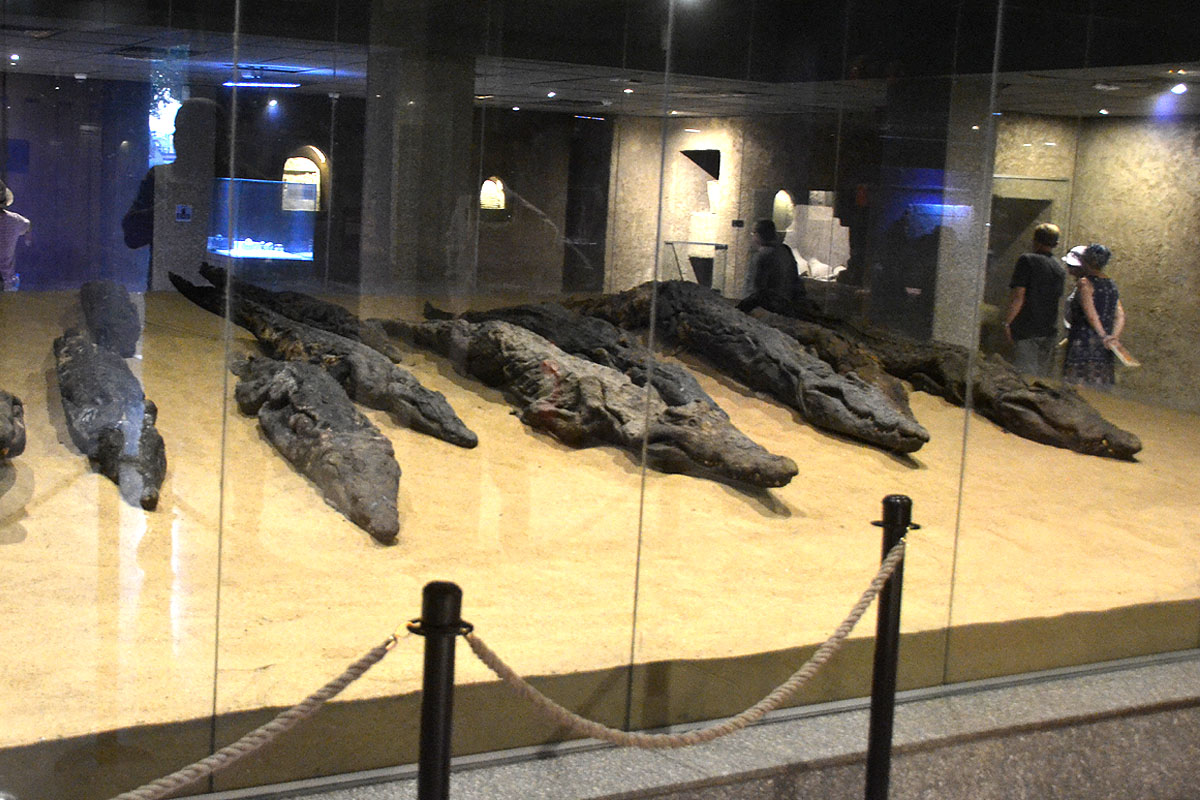

Don’t miss the Crocodile Museum next door with its fascinating collection of crocodile mummies, statues and curiosities.
Dimly-lit and nicely air-conditioned, the museum is a welcome respite after a hot afternoon of exploring the temple.
It’s estimated that some 300 crocodile mummies were discovered in this area. And many are on display at the museum basking in the sand like they did in ancient times.
Other exhibits include offerings to Sobek left by faithful pilgrims and explanations of the complicated process of animal mummification.
Entrance to this museum is included in your ticket to the temple.
How to get to Kom Ombo:
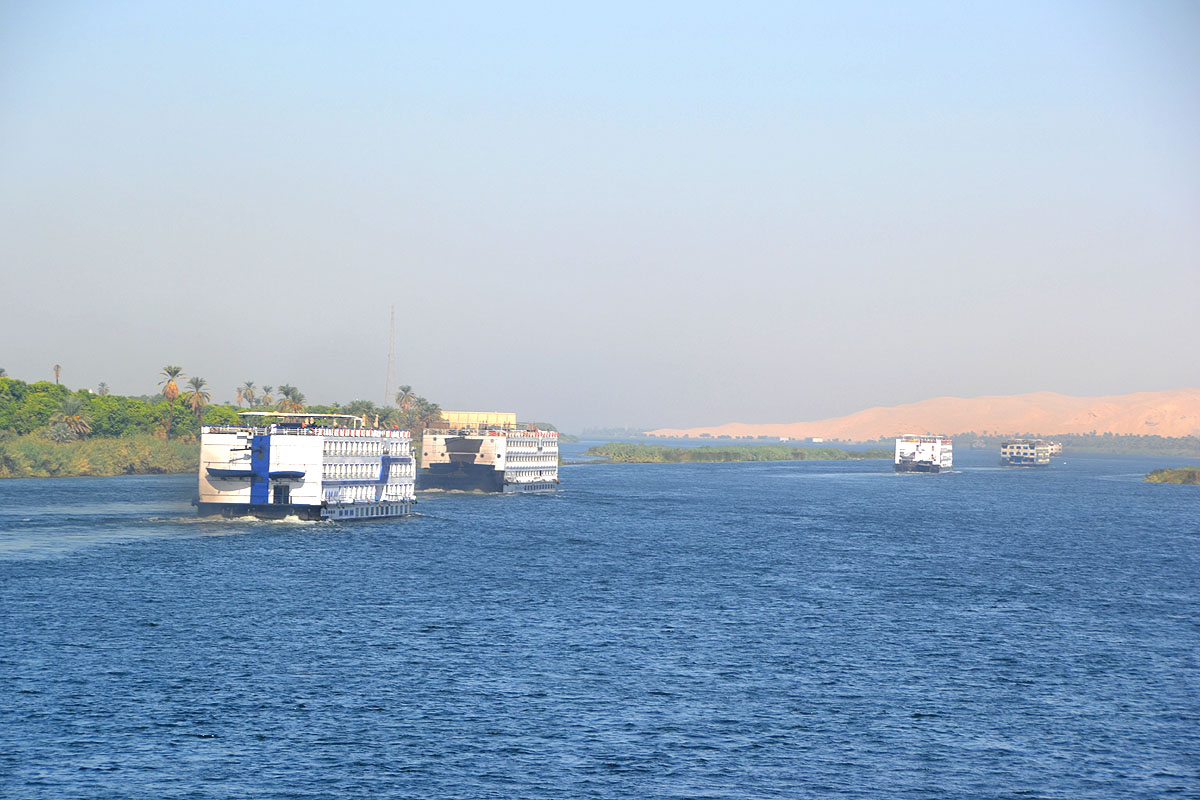

Kom Ombo is in Southern Egypt, about 50 kilometres north of Aswan.
If you’re going on a Nile cruise, your boat will definitely stop at the town of Kom Ombo – a small agricultural hub surrounded by sugar cane fields. The town is home to thousands of displaced Nubians who came here after the construction of the High Dam.
Your boat will dock just at the foot of the temple. And it’s a short walk from there to the ticket booth (past plenty of souvenir vendors of course).
And this is the best way to visit Kom Ombo – and the easiest way to get around this stretch of the river dotted with Ancient Egyptian temples. Plus you’ll see lots of incredible scenery and rural life along the way.
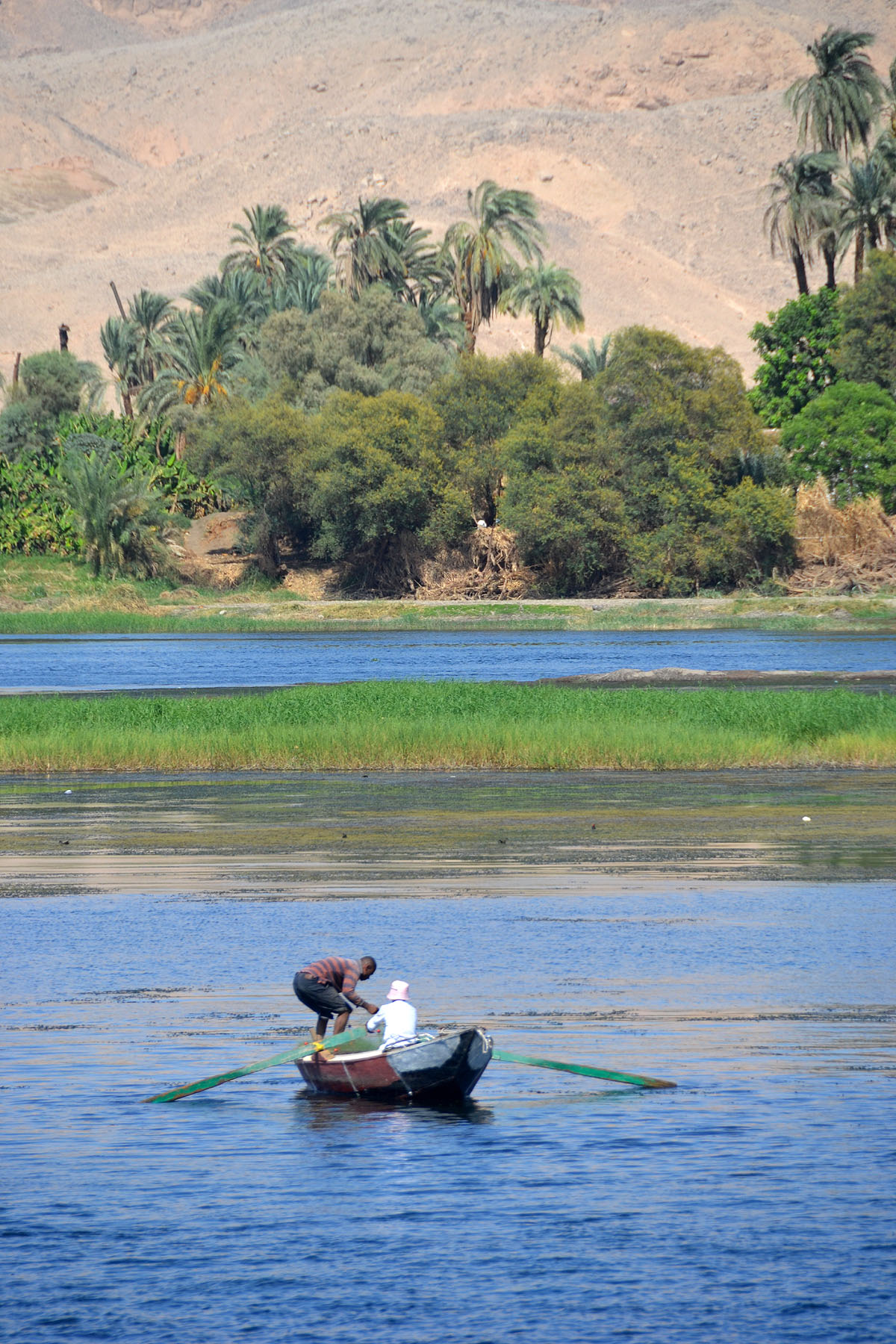

I visited Kom Ombo as part of a 7-day Nile cruise with Egypt Rest Tours and I highly recommend them. This tour package is perfect if you want to visit Cairo, Luxor, Aswan and all the major Ancient Egyptian temples on the Nile.
Alternatively, sign up for a day tour to Kom Ombo from either Luxor or Aswan. If you’re going solo, take a local train or hired driver to Kom Ombo from either city.
For a more leisurely trip, take a cruise on a traditional Dahabiya. These large and luxurious sailing boats give you a slower itinerary and more history than a Nile cruise.
Essential tips for visiting Kom Ombo:
- Don’t forget water and plenty of sunscreen.
- Wear comfortable, closed-toe shoes as the terrain gets rocky (avoid dainty sandals).
- If you’re on a Nile cruise, don’t worry about covering up. You’ll be going into the temple straight from your cruise boat so short sleeves and shorts are fine.
Need to know:
Hours: Daily from 7am to 9pm.
Tickets: 240 EGP (360 EGP starting from December 2023)
Conclusion
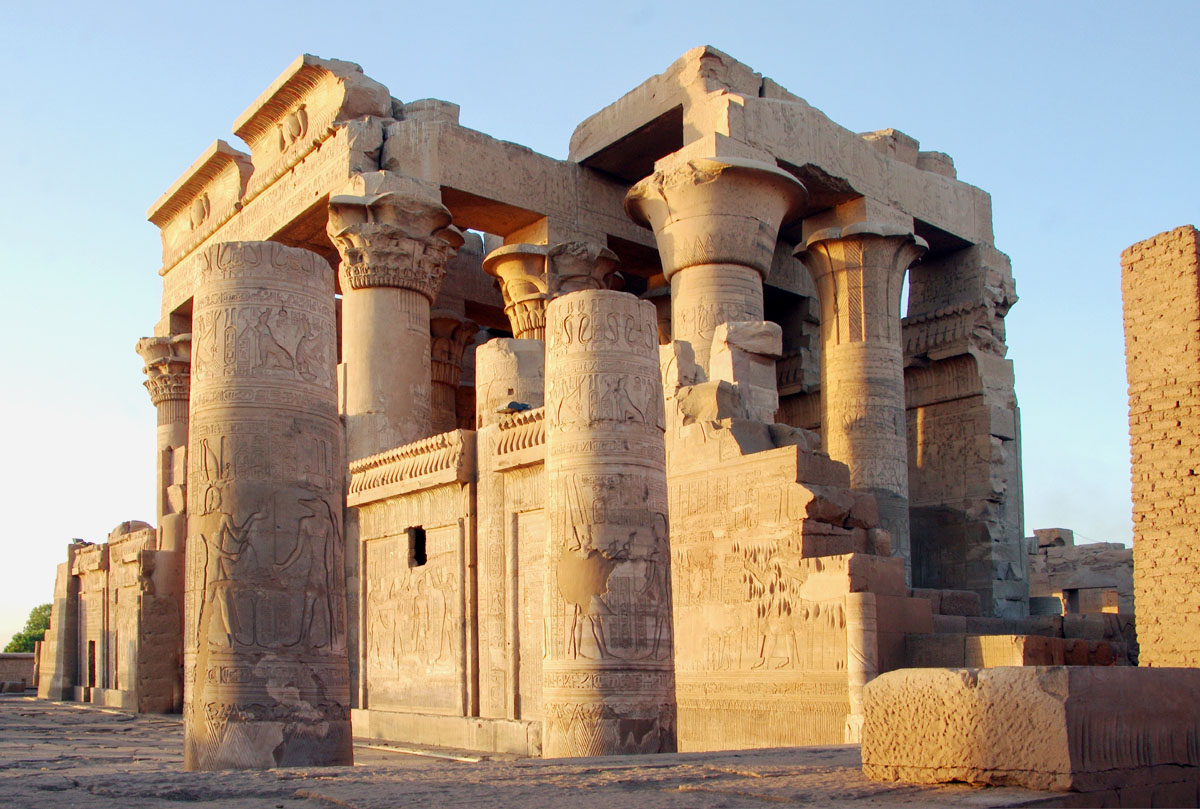

With its intricate floral columns and crocodile lore, Kom Ombo is a stunning temple that you shouldn’t miss along the Nile.
It’s uniquely dedicated to two different deities. And it holds some fascinating reliefs that offer insights into Ancient Egyptian medicine, temple rituals and calendars.
I’ve visited Kom Ombo many times and it’s one of my favorite stops on a Nile cruise.
I would love to hear from you. Is Kom Ombo on your itinerary?
MORE RESOURCES:
An Ultimate Guide to the Kom Ombo Crocodile Museum
Pin it:
